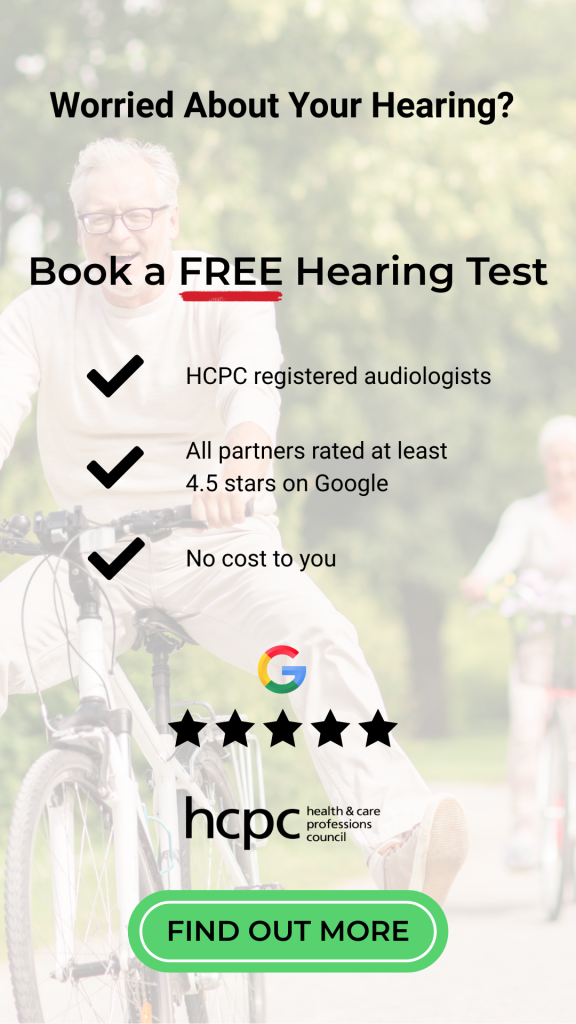Introduction: Why Choosing the Right Hearing Aids Really Matters
Choosing hearing aids isn’t just about boosting volume—it’s about reclaiming your connection to the world. From conversations with loved ones to enjoying music, nature, or a night out, the right hearing aids can dramatically improve your daily life. But with so many models, features, and styles on the market, figuring out what’s best for you can feel overwhelming.
If you’re asking, “How do I choose the right hearing aids?”, you’re already on the right path. The truth is: hearing aids are highly personal. What works for one person may not suit another, and the wrong fit—whether physical, functional, or financial—can leave you frustrated or even tempted to stop wearing them altogether.
This complete buyer’s guide is here to help you cut through the noise. We’ll walk you through the types of hearing aids available, what features to look for, how your lifestyle and budget should guide your decision, and how to make sure you’re supported after you walk out with your device.
Whether you’re a first-time buyer or considering an upgrade, this article will give you the clarity and confidence to make a choice that truly fits.
Understanding Your Hearing Needs First
Before you even start comparing brands or browsing styles, the most important step in choosing the right hearing aids is understanding your unique hearing profile. Without this, it’s like buying glasses without ever checking your prescription—there’s no guarantee they’ll actually help.
Types of Hearing Loss and How They Affect Your Choices
Hearing loss isn’t a one-size-fits-all diagnosis. It comes in several forms, and each one affects your hearing—and your hearing aid needs—differently:
- Sensorineural hearing loss: The most common type, caused by damage to the inner ear or auditory nerve. Often age-related or due to noise exposure. Typically requires amplification with clarity-enhancing features.
- Conductive hearing loss: Caused by obstructions (like wax) or middle ear issues. Some conductive loss may be medically treatable, but hearing aids can still help if surgery isn’t an option.
- Mixed hearing loss: A combination of the two above, requiring a more customized solution with adjustable power and comfort settings.
Understanding which category you fall into helps narrow down whether you need more powerful devices, discreet designs, or models that offer better speech-in-noise processing.
The Role of a Professional Hearing Test
Don’t skip this step. A professional hearing assessment from an audiologist doesn’t just tell you how much you can hear—it shows you what frequencies you struggle with, how your brain processes sound, and how you perform in noisy settings.
This audiogram acts as your blueprint for selecting hearing aids. It guides your provider to recommend models with the right power, clarity, and customization options to match your hearing profile.
Think of it as investing in a personalized roadmap—one that sets the stage for everything else.
Types of Hearing Aids Explained
Once you understand your hearing needs, the next step is to explore the types of hearing aids available. The world of hearing devices is more diverse than ever—ranging from ultra-discreet in-ear models to powerful, behind-the-ear options with high-tech features.
Knowing the differences can help you choose a style that meets your medical needs and suits your lifestyle and comfort preferences.
Behind-the-Ear (BTE) Hearing Aids
These are the most versatile and widely used hearing aids. They sit behind the ear with a tube or wire connecting to an ear mold or dome in the canal.
Best for:
- Moderate to severe hearing loss
- People who want more power and longer battery life
- Users who value ease of handling and durability
Pros:
- Suitable for all ages and most hearing loss types
- Easy to clean and maintain
- Compatible with wireless features like Bluetooth
Cons:
- More visible than in-ear styles
- Can feel bulky for some users
In-the-Ear (ITE) and In-the-Canal (ITC) Hearing Aids
These sit entirely within the outer ear or slightly deeper in the ear canal. They’re custom-molded and often more discreet than BTE models.
Best for:
- Mild to moderate hearing loss
- People who prefer less visibility and more natural sound
Pros:
- Discreet design
- Custom fit
- Easier to use with glasses or face masks
Cons:
- Smaller batteries (shorter life)
- Limited power and fewer advanced features
Completely-in-Canal (CIC) and Invisible-in-Canal (IIC)
These are the smallest and most discreet hearing aids, fitting deep inside the ear canal and often virtually invisible.
Best for:
- Mild hearing loss
- Users prioritizing invisibility over features
Pros:
- Very discreet
- Natural sound positioning
Cons:
- Limited features
- Not ideal for severe hearing loss or people with dexterity issues
Each style offers a different balance between visibility, power, comfort, and features. Choosing the right one starts with understanding what matters most in your daily life—which we’ll explore in the next section.
Key Features to Look For in Hearing Aids
Modern hearing aids are more than just amplifiers—they’re smart devices equipped with technology designed to help you hear better in a variety of situations. But not every feature is necessary for every user. Knowing which ones truly improve clarity and convenience will help you choose wisely—and avoid overpaying.
Noise Reduction and Feedback Cancellation
These features improve comfort in noisy environments and prevent that annoying whistling sound (feedback) that older hearing aids were known for.
- Noise reduction helps you focus on voices while minimizing background noise like traffic or crowd chatter.
- Feedback cancellation prevents sound from looping back into the microphone and creating a high-pitched squeal.
These are must-haves for almost everyone, especially if you socialize often or work in unpredictable sound environments.
Bluetooth Connectivity
Want to stream phone calls, music, or podcasts directly into your hearing aids? Look for Bluetooth-enabled models. They pair with smartphones, tablets, TVs, and more—turning your hearing aids into mini wireless headphones. Some even let you control volume and settings via an app.
Perfect for:
- Tech-savvy users
- Those who struggle with phone clarity
- People who love multitasking
Rechargeable Batteries
No more fumbling with tiny button batteries every week. Rechargeable hearing aids are gaining popularity for their convenience and cost-effectiveness over time.
Great for:
- Daily users
- Those with dexterity issues
- Eco-conscious buyers
Directional Microphones and Speech-Focused Processing
Advanced models come with adaptive directional microphones that “follow” voices and focus amplification on the person speaking—especially helpful in group settings or restaurants. Some premium devices even use AI to analyze your sound environment in real-time and adjust accordingly.
These are ideal if you:
- Struggle to hear in crowds
- Attend meetings or social events often
- Want high speech clarity over general amplification
Lifestyle Factors That Should Influence Your Choice
Choosing the right hearing aids isn’t just about your hearing test results—it’s about how you live your life. From work demands to social habits, physical activity, and even fashion preferences, your lifestyle plays a major role in selecting the best fit for your daily reality.
Matching Your Hearing Aid to Your Work, Hobbies, and Social Life
If you’re constantly in noisy environments like meetings, restaurants, or public spaces, you’ll benefit from:
- Directional microphones that focus on speech
- Noise reduction features
- Bluetooth connectivity for phone calls and remote adjustments
If your day-to-day life is quieter—maybe you work from home or live in a calm setting—a simpler model with basic amplification and comfort features might be enough.
Are you active or outdoorsy? Then you may prefer:
- Moisture-resistant models
- Secure, behind-the-ear (BTE) styles that stay in place
- Rechargeable batteries for fewer interruptions
On the flip side, if you prioritize appearance and discretion, consider:
- Invisible-in-canal (IIC) or completely-in-canal (CIC) models
- Skin-toned options that blend with your complexion
- Slim, low-profile designs that fit under glasses or masks
Comfort, Visibility, and Daily Usability
No matter your routine, comfort is key. A hearing aid that irritates your ear, falls out, or draws unwanted attention can quickly discourage daily use. Make sure to consider:
- Ear canal shape and sensitivity
- Manual dexterity (smaller models may be hard to handle for some)
- Ease of inserting, removing, and cleaning the device
You should also think about how your hearing aids fit into your habits. If you’re always on your phone, love streaming music, or use voice assistants like Siri or Alexa—opt for models that integrate seamlessly with tech.
Ultimately, the right hearing aid should support your lifestyle—not interrupt it.
Cost, Insurance, and Ongoing Support
Hearing aids are a big investment—not just financially, but in your health, confidence, and quality of life. But too often, buyers focus only on the price tag, without considering the long-term value, warranty, or support services that come with the device. Let’s break it all down.
What Hearing Aids Cost and What Affects the Price
The cost of hearing aids can vary widely, ranging from $1,000 to $7,000+ per pair, depending on:
- Technology level (basic vs. premium features)
- Brand reputation and service plans
- Customization needs (e.g., custom molds)
- Additional accessories (streaming devices, remote mics)
Basic models with fewer features may be suitable for quiet lifestyles, while premium models offer automatic adjustments, advanced noise processing, and Bluetooth connectivity.
Remember: higher price doesn’t always mean “better”—but it often means more adaptable and easier to use in complex sound environments.
Insurance, Payment Plans, and Financial Aid
Unfortunately, many insurance plans in the U.S. do not fully cover hearing aids. However:
- Some Medicare Advantage or private insurance plans may offer partial reimbursement
- Veterans may qualify for free hearing aids through the VA
- Payment plans and financing options are often available through audiologists or hearing aid providers
- Charities and programs like Hear Now, Audient, or state Medicaid programs can help qualified individuals afford devices
Always ask for a detailed quote that includes:
- Hearing aid cost
- Fitting fees
- Follow-up appointments
- Warranty coverage
- Return policies
Warranties, Trials, and Follow-Up Care Matter More Than You Think
The real value of a hearing aid goes beyond the device—it’s in the service and support that comes with it.
Look for providers who offer:
- 30–60 day trial periods
- Adjustments and reprogramming at no extra charge
- Loss and damage warranties
- Ongoing cleanings and maintenance checks
A great hearing aid that’s not fine-tuned to your ear and lifestyle will still underperform. That’s why building a relationship with a trusted audiologist or provider is just as important as choosing the right brand or model.
Conclusion: The Right Hearing Aids Can Change Everything
Choosing the right hearing aids isn’t just about improving sound—it’s about reclaiming your confidence, independence, and connection to the people and moments that matter most.
With the right knowledge, expert support, and a clear understanding of your needs, finding the perfect pair doesn’t have to be overwhelming. It’s about more than just brand names and features. It’s about asking: How do I want to live, communicate, and feel every day?
Whether you’re active, tech-savvy, minimalist, or just starting your hearing health journey, there’s a hearing aid designed to support you. From discreet in-ear models to full-featured devices that integrate with your digital life, the options are there—and they’re more advanced than ever.
Don’t rush the decision. Try different models, ask questions, and find a provider who listens as closely as they expect you to. Because when your hearing aid is the right fit, everything else falls into place: your conversations, your confidence, and your quality of life.
Frequently Asked Questions
Are expensive hearing aids always better?
Not necessarily. More expensive hearing aids usually offer advanced features like AI-powered sound processing, Bluetooth streaming, or rechargeable batteries—but that doesn’t mean they’re the best fit for everyone. The best hearing aid is the one that matches your hearing needs, lifestyle, and comfort level, not just your budget.
What’s the best hearing aid for first-time users?
First-time users often do well with mid-range behind-the-ear (BTE) or in-the-ear (ITE) models that are easy to handle and offer automatic features like volume adjustment and noise reduction. Choose a model that includes a trial period, so you can get used to it and make changes if needed.
Can I buy hearing aids online?
Yes, but with caution. Over-the-counter (OTC) hearing aids are now legal in some countries, including the U.S. for adults with mild to moderate hearing loss. However, they lack professional fitting and customization. For more serious or complex hearing loss, it’s best to work with an audiologist who can tailor the device to your needs.
How long do hearing aids last?
Most hearing aids last 5 to 7 years, depending on usage, care, and model quality. Rechargeable batteries usually last 3–5 years, while replaceable battery models may have a slightly longer shelf life if well maintained.
Do I need one or two hearing aids?
If you have hearing loss in both ears, you’ll benefit from using two hearing aids. This allows for better sound localization, speech clarity, and balanced hearing. Wearing just one can cause listening fatigue and make it harder to filter background noise.
How do I clean and maintain hearing aids properly?
- Use a soft, dry cloth or brush to wipe away wax and moisture daily
- Store them in a dry box or case when not in use
- Avoid water, hairspray, or lotions near your device
- Visit your audiologist regularly for deep cleaning and adjustments
Proper care extends the life of your devices and keeps them working at their best.






